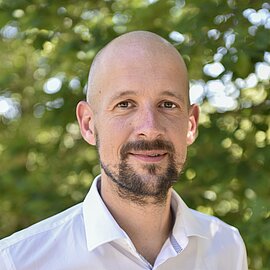There exists widespread agricultural land abandonment in the territory of the former Soviet Union. Recultivation of this land would help meet the increasing food demand of a growing world population. However, the soil and vegetation of these areas store significant amounts of carbon and recultivation would result in high carbon emissions and thereby contribute to global warming. Researchers from the Leibniz-Institute for Agricultural Development in Central and Eastern Europe (IAMO), of Humboldt-Universität zu Berlin and Potsdam Institute for Climate Impact Research have developed a model which allows a better understanding of the spatial distribution and abandoned land and thereby of the agricultural potentials of this region. Furthermore, it helps identify areas where recultivation is associated with lower carbon emission. The results of this study can be found in the article „Post-Soviet cropland abandonment and carbon sequestration in European Russia, Ukraine and Belarus“, which was published in the renowned scientific journal Global Biogeochemical Cycles.
A growing population and changing consumption habits have caused a drastic increase in global food demand. However, with intensification of agricultural production systems often come adverse impacts for the environment. Specifically, agricultural land use accounts for approximately one third of global greenhouse gas emissions. “The question of how to increase agricultural output while limiting emissions due to land use is therefore a key challenge of humanity", explains IAMO researcher Florian Schierhorn, who is the principle investigator in this research project.
Given this background, reclamation of previously cultivated but currently abandoned agricultural land is an interesting opportunity to raise global agricultural production. Large areas of abandoned land can be found in former Soviet Union countries, where the most widespread episode of land use change occurred after the collapse of socialism. These vast, currently unused lands suggest a large potential resource of untapped agricultural production. However, abandoned land may sequester significant amounts of carbon, and recultivation is likely to be associated with considerable HGH emissions. Therefore, trade-offs between increasing agricultural production thorugh land recultivation and the associated carbon emissions must be considered.
The researchers developed a spatial allocation model to produce high-resolution annual maps of cropland and abandoned croplands in European Russia, Ukraine and Belarus. The algorithm distributed sown area statistics to the most suitable locations, with consideration of global land use maps and geophysical data such as precipitation, soil quality, and transportation costs to larger cities. Then the researchers simulated the dynamics of carbon sequestration due to cropland abandonment using a dynamic vegetation model which was developed at the Potsdam Institute for Climate Impact Research.
The researchers found a total of 87 million ha of cropland and 31 million ha of abandoned cropland in European Russia, Ukraine and Belarus. Therefore, previous accounts of the amount of abandoned cropland have been greatly underestimated. The model revealed that cropland abandonment resulted in a net carbon sink of 470 million tonnes for the years 1990 through 2009. Moreover, the amount of carbon sequestered increased substantially after approximately 2000, as it usually takes 5 to 10 years for former cropland to transition from a carbon source to a carbon sink. Recultivation of older abandoned land would be associated with higher carbon emissions and led to substantial amounts of carbon not being sequestered in the vegetation currently developing on idle croplands. “Coupling the different powerful models permit assessing the advantages and disadvantages of the recultivation of abandoned cropland and thus of increasing agricultural production in this globally important agricultural region", explains researcher Daniel Müller, who was an essential contributor in this study.
Text: 4,074 characters (incl. spaces)
Publication
Schierhorn, F., Müller, D., Beringer, T., Prishchepov, A., Kuemmerle, T., Balmann, A. (2013): Post-Soviet cropland abandonment and carbon sequestration in European Russia, Ukraine and Belarus, Global Biogeochemical Cycles, Vol. 27. http://dx.doi.org/10.1002/2013GB004654

